| Recent Featured Videos and Articles | Eastern “Orthodoxy” Refuted | How To Avoid Sin | The Antichrist Identified! | What Fake Christians Get Wrong About Ephesians | Why So Many Can't Believe | “Magicians” Prove A Spiritual World Exists | Amazing Evidence For God | News Links |
| Vatican II “Catholic” Church Exposed | Steps To Convert | Outside The Church There Is No Salvation | E-Exchanges | The Holy Rosary | Padre Pio | Traditional Catholic Issues And Groups | Help Save Souls: Donate |  |
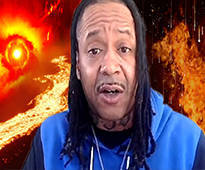
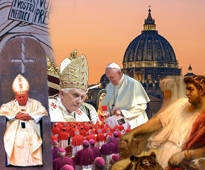
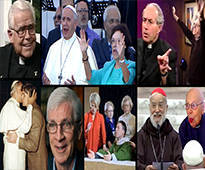
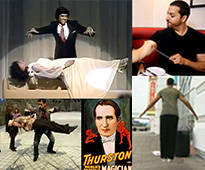
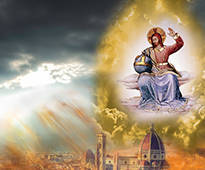

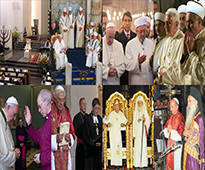


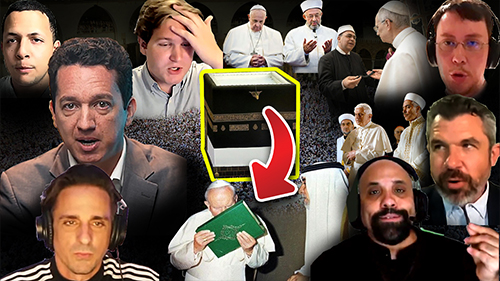 " />
" /> " />
" />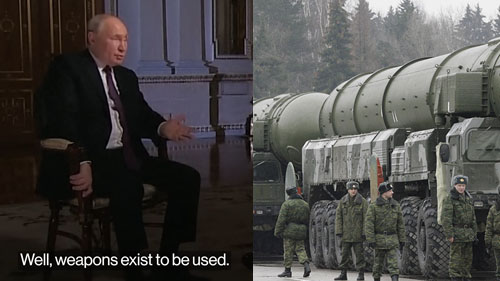 " />
" />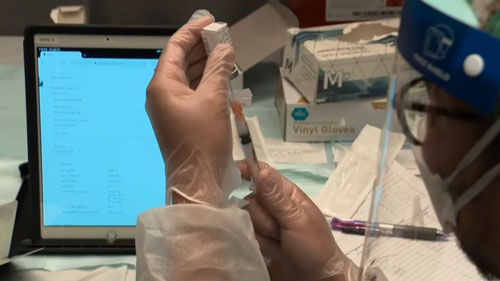 " />
" /> " />
" />




Dignitatis Humanae – Vatican II’s Declaration on Religious liberty
Go back to The Vatican II Revolution
4. Dignitatis Humanae – Vatican II’s Declaration on Religious liberty
Vatican II’s Declaration on Religious Liberty was without question the most notorious of all the documents of Vatican II. In order to understand why Vatican II’s teaching on religious liberty is heretical one must understand the Catholic Church’s infallible teaching on the issue.
It’s a dogma of the Catholic Church that States have a right, and indeed a duty, to prevent the members of false religions from publicly propagating and practicing their false faiths. States must do this to protect the common good – the good of souls – which is harmed by the public dissemination of evil. This is why the Catholic Church has always taught that Catholicism should be the only religion of the State, and that the State should exclude and forbid the public profession and propagation of any other.
We will now look at three propositions that were condemned by Pope Pius IX in his authoritative Syllabus of Errors.
Notice, the idea that the Catholic religion should not be the only religion of the State, to the exclusion of other religions, is condemned. That means that the Catholic religion should be the only religion of the State and that the others should be excluded from public worship, profession, practice and propagation. The Catholic Church doesn’t force nonbelievers to believe in the Catholic Faith, since belief (by definition) is a free act of the will.
However, it teaches that States should forbid the propagation and public profession of false religions which lead souls to Hell.
In Quanta Cura, Pope Pius IX also condemned the idea that every man should be granted the civil right to religious liberty.
But Vatican II teaches just the opposite:
Vatican II teaches that religious liberty should be a civil right, which is directly condemned by Pope Pius IX. Vatican II also says that this right to religious liberty applies to public, as well as private, expression; and that no one should be prevented from the public expression or practice of his religion. The teaching of Vatican II is direct heresy against the infallible teaching of Pope Pius IX and a host of other popes. The teaching of Vatican II on religious liberty could literally have been added to the errors of the Syllabus of Errors condemned by Pope Pius IX.
Benedict XVI admits that Vatican II’s teaching on Religious Liberty contradicts the teaching of the Syllabus of Errors of Pope Pius IX!
What’s amazing is that Benedict XVI admits what we just proved above!
Benedict XVI admits here that Vatican II’s teaching (which he adheres to) is directly contrary to the teaching of the Syllabus of Errors of Pope Pius IX. In other words, he just admitted that Vatican II’s teaching is contrary to the teaching of the Catholic Magisterium. One could hardly ask for more of a confirmation that the teaching of Vatican II is heretical. In his book, Benedict XVI repeats this again and again, calling the teaching of Vatican II “the countersyllabus,” and saying that there can be no return to the Syllabus of Errors!
Vatican II’s heresy is perhaps most clearly expressed in the next quote:
Vatican II says that the State exceeds its authority if it dares to prevent religious activity. This is totally heretical.
Here we see Pope Leo XIII (simply reiterating the consistent teaching of pope after pope) teaching that the State not only can, but should curtail and forbid the rights and privileges of other religions to perform religious acts – exactly the opposite of what Vatican II declared. Such public acts, false opinions and false teachings should be repressed by public authority (the State), according to the teaching of the Catholic Church, so that souls are not scandalized or enticed by them.
The heresy of Vatican II on this issue is very clear, but there are always heretics who attempt to defend the indefensible.
Refuting attempted defenses of Vatican II’s teaching on Religious Liberty
Some defenders of Vatican II’s teaching on religious liberty argue that Vatican II simply taught that we shouldn’t coerce people to believe.
As we saw already, this is completely false. Vatican II didn’t merely teach that the Catholic Church doesn’t force or coerce an unbeliever to be a Catholic. Rather, Vatican II taught that States don’t have the right to put down the public expression and propagation and practice of false religions (because the civil right to religious liberty should be universally recognized). Again, we must understand the distinction between the two different issues which the dishonest defenders of Vatican II sometimes attempt to conflate: First issue) the Catholic Church doesn’t force or coerce a nonbeliever to believe, since belief is free – true; Second issue) the State cannot repress the public expression of these false religions – this is where Vatican II contradicts the Catholic Church on religious liberty. The second issue is the key.
To understand this better let’s give an example: If a State were presented, for instance, with Muslims and Jews holding their religious services and celebrations in a public place (even if they were not disturbing the peace or infringing on any private property or upsetting the public order at all), the State could and should (according to Catholic teaching) repress these services and celebrations and send the Jews and Muslims home (or would arrest them, if the law were well established) since they scandalize others and could cause others to join these false religions. The State would tell them their obligation to be Catholic before God and try to convert them by directing them to the Catholic priests, but it wouldn’t force them to do so. This is an example of the clear distinction between 1) forcing one to be Catholic, something the Church condemns, since belief is free and 2) the State’s right to repress false religious activity, something the Church teaches.
But Vatican II teaches just the opposite. The passage quoted below is the clearest heresy of Vatican II on religious liberty. We quote it again because this passageis utterly indefensible and cuts through all attempted distortions, such as the distortion from Patrick Madrid above.
Here Vatican II says that the State exceeds its authority if it dares to direct or prevent religious activity. We just saw above that the Syllabus of errors condemned the idea that the State cannot prevent the activity of other religions. This proves that Vatican II’s teaching on religious liberty was clearly false and heretical, and that Vatican II wasn’t merely teaching that one should not be coerced to become Catholic.
The “Within Due Limits” Subterfuge
Attempting to defend the heretical teaching of Vatican II on religious liberty by any means, the defenders of Vatican II will engage in tremendous distortions. They will quote the passage below from Vatican II and distort its teaching in the hope that the passage can (being thus distorted) somehow conform to traditional teaching against religious liberty. They assert that Vatican II didn’t allow unconditional freedom of public worship, but mentioned certain “limits.”
“See,” they say, “Vatican II taught that States could put limits on this religious expression; and this is in conformity with traditional teaching.” This is such a dishonest argument, such a distortion of the text, that Catholics should be outraged by it. In the passage above, while teaching that no one (no matter what his religion) can be prevented from expressing his religion publicly, Vatican II is simply covering all its bases and making sure that it doesn’t go on the record as allowing anarchy in the State.
Vatican II had to add the clause “within due limits” so that it didn’t go on the record endorsing, for instance, a religious group blocking traffic during rush hour or religious services being held in the middle of busy highways. Thus, it taught that “no one… shall be prevented from acting according to his conscience, whether in private or in public, within due limits.” Vatican II is not in any way saying that a Catholic State could curtail the right of religious liberty of non-Catholic citizens; Vatican II is still teaching undeniable heresy on religious liberty: that religious liberty should be a civil right and that no one shall be prevented by the State from acting according to his conscience in public; but it was simply indicating that due public order cannot be violated by those exercising this right.
To prove that this is the meaning – which, of course, is obvious to any honest assessor of this issue – we can simply quote the very same #2 in that Declaration:
We can see that the “within due limits” phrase simply means “as long as due public order is preserved.” Thus, according to Vatican II, every man has the right to religious liberty, including the public expression and practice of his religion, which the State cannot curtail as long as due public order is preserved. This is heretical. Vatican II did not conform to traditional teaching, no matter how hard heretics such as “Fr.” Brian Harrison dishonestly attempt to use this clause to argue such. Vatican II taught that the State cannot prevent the public expression of false religions, as we see very clearly in this quote we’ve already discussed.
There is no way at all to defend the indefensibly heretical teaching of Vatican II on religious liberty.
The “Religious Liberty teaching is not a dogma” Objection
In view of the clear contradiction between Vatican II’s teaching on religious liberty and the traditional teaching, other defenders of the post-Vatican II apostasy have insisted that, despite the contradiction, the teaching of Vatican II doesn’t involve heresy because the traditional teaching on religious liberty was not infallibly taught as a dogma.
This is completely wrong, and easily refuted. The idea taught by Vatican II, that every man should be granted the civil right to religious liberty, so that he is ensured by law the right to publicly practice and spread his false religion, was dogmatically, solemnly and infallibly condemned by Pope Pius IX in Quanta Cura. The language that Pius IX uses more than fulfills the requirements for a dogmatic definition. Please note especially the bolded and underlined portions.
Pope Pius IX solemnly condemns, reprobates and proscribes (outlaws) this evil opinion by his apostolic authority, and solemnly declares that all the sons of the Catholic Church must hold this evil opinion as condemned. This is solemn language and infallible teaching of the highest order. There is no doubt that Quanta Cura constitutes a dogmatic condemnation of the idea that religious liberty should be a civil right given to each man. Vatican II’s teaching was, therefore, direct heresy against infallible dogmatic teaching on the issue.
Vatican II’s teaching on Religious Liberty rejects the entire History of Christendom and destroys Catholic Society
We’ve shown that Vatican II’s teaching on religious liberty is heretical. Many other examples could be given to illustrate that Vatican II’s teaching on religious liberty is false, evil and uncatholic. For instance, the dogmatic Council of Vienne specifically enjoined on Catholic leaders of States that they must publicly control (i.e. publicly suppress) the public practice of Islamic worship. Pope Clement V was reminding the State of its duty to prohibit the public profession of false religions.
According to Vatican II, this teaching of the Council of Vienne is wrong. It was also wrong, according to the teaching of Vatican II, that the Christian religion was declared to be the religion of the Roman Empire by Theodosius in 392 A.D. and all pagan temples were closed.[83] This shows us again that Vatican II’s teaching on religious liberty was evil and heretical.
Vatican II’s heretical teaching on religious liberty is precisely the reason why, following Vatican II, a number of Catholic nations changed their Catholic constitutions in favor of secular ones! The Catholic constitutions of Spain and Colombia were actually suppressed at the express direction of the Vatican, and the laws of those countries changed to permit the public practice of non-Catholic religions.
Changes to the Spanish Catholic Law as a result of the teaching of Vatican II
Article 6, 1: “The profession and practice of the Catholic Religion, which is that of the Spanish State, will enjoy official protection.”
Article 6, 2: “… the only ceremonies and other open manifestations of religion allowed will be Catholic.”
We can see that, in conformity with traditional Catholic teaching, the Spanish law decreed that the only ceremonies and public manifestations of religion would be Catholic. After Vatican II, however, the “Ley Organica del Estado” (Jan. 10, 1967) replaced this second paragraph of article 6 with the following:
“The State will assume the protection of religious liberty which will be under the protection of the Judiciary responsible for safeguarding morals and public order.”
Moreover, the preamble to the Constitution of Spain, modified by this same “Ley Organica del Estado” after Vatican II, explicitly declared:
“... Given the modification introduced in Article 6 by the `Ley Organica del Estado,’ ratified by referendum of the nation, in order to adapt its text to the conciliar Declaration on religious liberty promulgated Dec. 7, 1965 [by Vatican II], which demands the explicit recognition of this right [religious liberty], and conforms moreover to the second fundamental Principle of the Movement according to which the teaching of the Church ought to inspire our laws ...”
We can see that the second section of Article 6 of the 1945 Constitution was replaced by that of the 1967 precisely in order to bring the laws of Spain into agreement with the declaration of Vatican II! Perhaps this revision of Catholic laws in a Catholic country, which was made in order to conform to the new religion of Vatican II, illustrates more than anything else the forces at work here. Spain went from a Catholic nation to godless one, which now gives legal protection to divorce, sodomy, pornography and contraception, all thanks to Vatican II.
In line with its heretical teaching on religious liberty, Vatican II teaches the heresy that all religions have liberty of speech and liberty of the press.
The idea that everyone has the right to liberty of speech and the press has been condemned by many popes. We will only quote Pope Gregory XVI and Pope Leo XIII. Notice that Pope Gregory XVI called this idea (the very thing taught by Vatican II) harmful and “never sufficiently denounced.”
All of this Catholic teaching directly contradicts the heretical teaching of Vatican II.
Go back to The Vatican II Revolution
[62] Denzinger 1777.
[63] The Papal Encyclicals, Vol. 2 (1878-1903), p. 115.
[64] Denzinger 1778.
[65] Denzinger 1755.
[66] Denzinger 1690.
[67] Decrees of the Ecumenical Councils, Vol. 2, p. 1002.
[68] Decrees of the Ecumenical Councils, Vol. 2, p. 1003.
[69] Benedict XVI, Principles of Catholic Theology, San Francisco, CA: Ignatius Press, 1982, p. 381.
[70] Benedict XVI, Principles of Catholic Theology, p. 385.
[71] Benedict XVI, Principles of Catholic Theology, p. 391.
[72] Decrees of the Ecumenical Councils, Vol. 2, p. 1004.
[73] The Papal Encyclicals, Vol. 2 (1878-1903), pp. 175-176.
[74] Patrick Madrid, Pope Fiction, San Diego: Basilica Press, 1999, p. 277
[75] Denzinger 1778.
[76] Decrees of the Ecumenical Councils, Vol. 2, p. 1004.
[77] Decrees of the Ecumenical Councils, Vol. 2, p. 1002.
[78] Decrees of the Ecumenical Councils, Vol. 2, p. 1003.
[79] Decrees of the Ecumenical Councils, Vol. 2, p. 1004.
[80] Chris Ferrara, Catholic Family News, “Opposing the Sedevacantist Enterprise, Part II,” Oct. 2005, pp. 24-25.
[81] Denzinger 1690; 1699.
[82] Decrees of the Ecumenical Councils, Vol. 1, p. 380.
[83] Fr. John Laux, Church History, p. 98.
[84] Denzinger 1995.
[85] The Papal Encyclicals, Vol. 1 (1740-1878), p. 271.
[86] Decrees of the Ecumenical Councils, Vol. 2, p. 1004.
[87] The Papal Encyclicals, Vol. 1 (1740-1878), p. 238.
[88] The Papal Encyclicals, Vol. 2 (1878-1903), p. 180.
[89] The Papal Encyclicals, Vol. 2 (1878-1903), p. 114.
Sign up for our free e-mail list to see future vaticancatholic.com videos and articles.
Recent Content
^